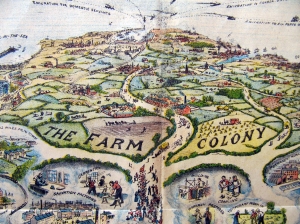Cinematic Skies and Revolutionary Winds
This month marks the tenth anniversary of The New English Landscape blog, now running to seventy-five short essays, reviews and commentary, or 70,000 words. It was started to promote the book of that name published by photographer Jason Orton and myself in autumn 2013, collaboratively exploring in words and photographs the unique topography of the coastline, estuaries, islands, and riparian passageways of Essex. The first edition of 1000 copies sold out within a year and was reprinted, selling out again. Since then, our interest in landscape and history has continued, though Jason’s travels have taken him and his camerasto many places beyond.
The title of this anniversary blog is taken from Chris Petit’s foreword to Est: Collected Reports from East Anglia, published by Dunlin Press in 2015, which captures the spirit of our endeavours, and which was reviewed here at the time. In the past ten years subjects covered have included: walks, cycle rides and talks, and thoughts on artists such as Prunella Clough, Jock McFadyen, Ian Hamilton Finlay, Sarah Pickstone, John Christie, and the East London Group. There are also notes on the writings of Arthur Morrison, Helen MacDonald, David Matless, Georges Perec, Margaret Willes, John Boughton, Orhan Pamuk, Thomas Laqueur, J.A.Baker, Alex Niven, Anna Neima, John Berger, Raymond Williams and Colin Ward, amongst others, as well as short essays on the 1953 floods, Detectorists, plotlands, FratingHall Farm, new towns, Focal Point Gallery, the Roding Valley, seaside surrealism, The Law of the Forest, the Peculiar People, Rainham Marshes, the Kindertransport, Henry George and the land question, Tolstoy in Essex, the ‘Threepenny Doctor’, Cedric Morris at Benton End, and, in September 2021, at the more arcane end of the spectrum, ‘The 1946 Conference on the Post-War Loaf’.
My interest in the back-to-the-land and settlement movement in Essex soon had to accept that religion was often as important as politics. There was William Morris and Henry George, of course, but there was also George Lansbury, the ‘Thaxted experiment’, the Salvation Army and the Quakers. Consequently, when I came across the Red Heaven podcast earlier this year, a major new stream of evidence in this inspiring chronicle of radical endeavour suddenly ran clear.
The Red Heaven podcast opens up a compelling portal into the story of the religious movements or the ‘social gospel’ that linked London’s east end with rural ‘radical Essex’ throughout the 20th century. This emerged famously through the life and work of Conrad Noel (aka ‘The Red Vicar’) at The Church of St John the Baptist with Our Lady and Saint Laurence in Thaxted from 1910 until his death in 1942, when he was then succeeded by his son-in-law, Father Jack Putterill, who carried on the revolutionary social justice tradition until 1973. But there were many others, as the series of fascinating interviews reveals.
The story of revolutionary Anglo-Catholicism and Christian Socialism – once strong in Essex- was informed by sympathetic connections to agricultural trade-unionism, the Workers’ Educational Association, pageant theatre and urban music hall, as well as to the Edwardian folk revival, the arts and craft movement, Catholic processionals, Morris dancing and choral music (courtesy of Imogen Holst). This is told in the course of 26 episodes of the podcast to date, though I have now been asked to provide the 27th, which can now be found via the link below. All of this is thanks to Dr Simon Machin who has developed, hosted, recorded and broadcast this uplifting story.
Link to Red Heaven https://www.redheavenproject.com/
The illustrations are taken from the allegorical map which acts as the frontispiece to my copy of General William Booth’s In Darkest England and the Way Out, first published in 1890. I’ve always had a soft spot for the Salvation Army, as did my father, ‘because at least they go into the pubs’. As he often did himself.
K.W.


